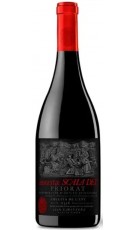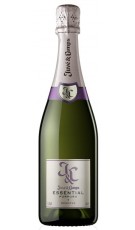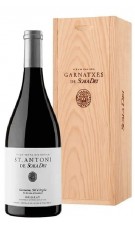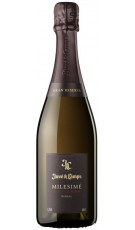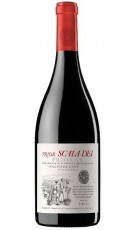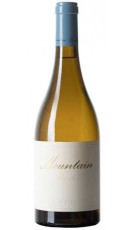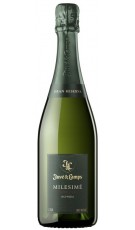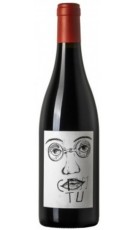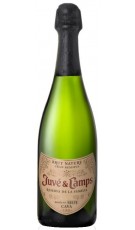
Cataluña There are 274 products.
La vid y el vino fueron introducidos por los griego en el área del Ampurdán. En época de los romanos se desarrolló el comercio de los vinos del Campo de Tarragona y de Alella, en los alrededores de Tarraco y Barcino. Durante el siglo XVIII se extendió la exporta...
Catalog
-
Scala Dei Heretge
Red wine-SCALA DEIHeretge is a single varietal Cariñena that breaks with the "dogma" followed until now by Cellers Scala Dei, where Grenache has always been the hallmark. It is, therefore, a transgressive...
-
Microvinificación Xarel·lo...
White Wine.AVGVSTVS FORVMPenedésWhite wine from an old vineyard with views of the Mediterranean Sea right next to the winery, with this Xarel·lo fermented in French oak barrels we show that with this variety long aging can...
-
Juvé & Camps Essential...
Reserva Brut Cava.JUVÉ & CAMPSCavaEssential Púrpura is the welcome door to the Juvé & Camps universe. A melody for three voices where the xarel·lo sets the rhythm. Bold classicism in original version. Xarel lo,...
-
Scala Dei St. Antoni 2019
Red wine-SCALA DEIScala Dei St. Antoni is a single vineyard wine, one of the oldest vineyards in Scala Dei, which was already worked by Carthusian monks. With it we have recovered a production heritage that had...
-
Microvinificación Xarel·lo...
White Wine.AVGVSTVS FORVMPenedésWhite wine vinified "in white", this Xarel·lo Vermell from an old vineyard, has been made in an ovoid cement tank, where it has been aged for 6 months on its lees.
-
Juvé & Camps Milesimé Blanc...
Gran Reserva Brut Nature Cava.JUVÉ & CAMPSCavaXarel·lo de L'Olivera is made with the utmost care to preserve its Mediterranean character, its exquisite texture and the richness of its fantastic aromas. Milesimé Xare lo is a...
-
Scala Dei Prior 2021
Red wine-SCALA DEIThe Crianza red wine in Priorat, made with the four most cultivated varieties in the region, in the two most common types of soil in our country: slate and clay.
-
Microvinificación Xarel·lo...
White Wine.AVGVSTVS FORVMPenedésWhite wine from a century-old vineyard, this wine shows us all the strength and potential of the Xarel·lo variety. Partially vinified in oak barrels, it is then aged on triple lees in an...
-
Bertha Mountain 2017
Cava.BHERTA CAVAPenedésComplex and well structured sparkling white wine. Made for 7 months in stainless steel tanks on its fine lees, plus 12 months in the bottle.
-
Juvé & Camps Milesimé...
Gran Reserva Brut Nature Cava.JUVÉ & CAMPSCavaXarel·lo de L'Olivera is made with the utmost care to preserve its Mediterranean character, its exquisite texture and the richness of its fantastic aromas. Milesimé Xare lo is a...
In stock -
Clos Mogador Com TU 2019
Red Wine.CLOS MOGADORMontsantRed Wine made from Garnacha grapes since the 2000s with René Barbier Jr. in the municipality of La Figuera. The name of this wine was chosen by Anderson Barbier Meyer, youngest son, artist,...
-
Juvé & Camps Reserva...
Gran Reserva Brut Nature Cava.JUVÉ & CAMPSCavaInitially intended for the exclusive consumption of the Juvé family, Reserva de la Familia is the best-selling Cava Brut Nature Gran Reserva in the world. Tremendously seductive; fresh,...
In stock
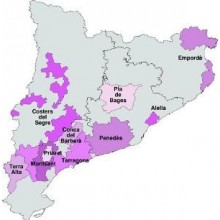
La vid y el vino fueron introducidos por los griego en el área del Ampurdán. En época de los romanos se desarrolló el comercio de los vinos del Campo de Tarragona y de Alella, en los alrededores de Tarraco y Barcino. Durante el siglo XVIII se extendió la exportación. De una parte se exportaba el vino del Ampurdán al Languedoc, y por otra parte se estimuló el cultivo de las comarcas litorales y prelitorales por la exportación a América como vino concentrado en aguardiente. Desde Villanueva y Geltrú se exportaba la producción del Penedés, desde Salou la producción del Baix Camp y del Priorato, y en menor medida desde los puertos de Rosas, Begur, Mataró, Barcelona y Tarragona. A partir del 1865, con la irrupción de la filoxera en Francia, todos los puertos orientaron la exportación al Languedoc y Provenza para atender la gran demanda francesa. Entre los años 1878 y 1900 la filoxera acabó destruyendo toda la viña de Cataluña. La replantación comportó un cambio, pasando la producción máxima del Bages al Penedès, y provocando el despoblamiento del Priorat. La replantación de cepas blancas favoreció el desarrollo del cava. Se crearon las primeras cooperativas vinícolas en Alella, Igualada y Artés, impulsadas por la Mancomunidad de Cataluña. Coincidiendo con el modernismo se construyeron grandes "cellers cooperatius" (bodegas cooperativas), denominados "catedrales del vino", en Barberà de la Conca, Espluga de Francolí, Falset, etc. En Raimat se produjo una experiencia inédita en Europa.

(+34) 91 129 11 11
(+34) 638 458 218
- Brandy
- Cognac
- Gin Premium
- Ron
- Whisky
- Denomination of Origin
- Winery



















